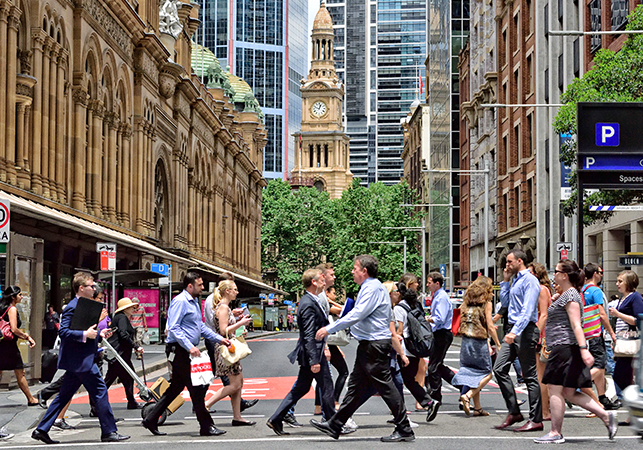CONSUMER PULSE

We are living in uncertain times, but one thing is certain: the better we understand audiences, the better we can serve their needs and wants as marketers. In response to the COVID-19 crisis, Nine has launched and conducts a fortnightly consumer sentiment poll to understand how we can help brands connect with our audiences in 2020.
Nine. Where Australia Connects.
Methodology
Consumer Pulse is undertaken via short online surveys conducted fortnightly with Nine's audiences - across linear television, 9Now and digital properties nine.com.au (and network sites), plus readers of news mastheads The Sydney Morning Herald, The Age and The Australian Financial Review (print + digital) and listeners of Nine Radio stations (2GB, 3AW, 4BC, 6PR, 2UE, 4BH, 6GT and Magic).
Consumer Pulse
Week 22 - commencing 20th September, 2020
This week's hot topics

Winter Olympics
61% of The Sydney Morning Herald readers say the International Olympic Committee should reconsider Beijing hosting the 2022 Winter Games

No to curfew
51% of 3AW listeners disagree that the night-time curfew was necessary in Victoria

High-speed internet
65% of Age readers support the Coalition's decision to spend $3.5 billion to provide high-speed fibre connections for households and businesses

Daylight saving
67% of 2GB listeners support daylight saving being standardised across all states and territories

City workers
51% of Australian Financial Review readers say it is not the right time for people (outside of Victoria) to go back to work in capital city CBDs (32% say it is)

Domestic flights
46% of 9Nation viewers say they would feel "moderately comfortable" flying domestically once state borders are open, and 29% say "not at all comfortable"
Capturing the mood
The national mood continues to lift, buoyed by audiences in the eastern states who are feeling significantly more hopeful, optimistic, encouraged and relieved. Victorians are showing signs of recovery, feeling less frustrated, isolated and annoyed than in recent weeks. West Australians are most likely to feel calm, safe, optimistic and relaxed.
Across age groups there are differences:
- 18-34s are more likely than others to be feeling optimistic, but also anxious, annoyed and bored
- 35-54s are more likely to be feeling stressed, isolated and frustrated
- 55+ are more likely to be feeling hopeful, calm, encouraged and relaxed
Mood tracker: Net positive vs negative mood
NOTE: For the best viewing experience on mobile, please view landscape.
Mood Snapshot: By age group
NOTE: For the best viewing experience on mobile, please view landscape.
Mood States: Key emotional indicators by state
NOTE: For the best viewing experience on mobile, please view landscape.
Concerns by state
Nationally, COVID concerns continue to dissipate and fewer than one in five now feel "very/extremely concerned" about the COVID-19 situation. However, audiences remain concerned about economic and social impacts, and Victorians are particularly concerned about the impact of lockdown on their mental health and emotional wellbeing. West Australians have fewer concerns overall.
Greatest concern by state
NOTE: For the best viewing experience on mobile, please view landscape.
Physical and mental health
Lockdown has limited the opportunities for physical activity and one in three audiences are reporting doing "less than before COVID". However, as we saw in Week 21, audiences are turning greater attention to their mental health and wellbeing, and that of others. There are continuing opportunities for brands and content to further lift the national mood.
Physical activity and focus on mental wellbeing of self and others vs pre-COVID
NOTE: For the best viewing experience on mobile, please view landscape.
Spending confidence
With Federal Budget day approaching on October 6, attention is again turning to measures to recover from COVID-19. Analysis of consumer spending attitudes among AFR readers compared to Nine's mass audiences (television, radio and mastheads) shows that each indicate similar levels of caution about spending but have differing expectations regarding their household finances for the rest of the year. Unlike mass audiences, AFR readers increasingly expect their financial situation to improve in the next three months.
Similar caution, differing fortunes: AFR readers vs mass audiences
NOTE: For the best viewing experience on mobile, please view landscape.
69% of Australian Financial Review readers say that if their personal income tax rate was cut tomorrow they would choose to save the extra money rather than spend it (AFR Editorial Poll)
Major purchase considerations
Across audience groups major purchase consideration remains broadly steady, with increases in key categories including domestic travel, gardening and landscaping, and major home improvements.
Major purchase consideration: Any category
NOTE: For the best viewing experience on mobile, please view landscape.
Domestic travel consideration: All audience groups
NOTE: For the best viewing experience on mobile, please view landscape.
Gardening, landscaping, plant purchase consideration: All audience groups
NOTE: For the best viewing experience on mobile, please view landscape.
Major home improvements consideration: All audience groups
NOTE: For the best viewing experience on mobile, please view landscape.
Contact your Nine advertising representative today
to hear how Nine's marketing solutions can help you engage Australian consumers like never before.



